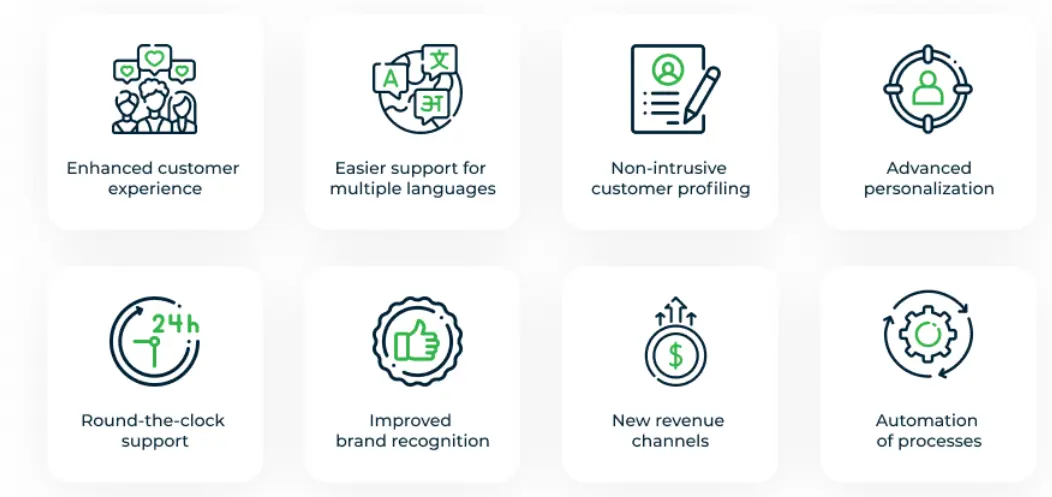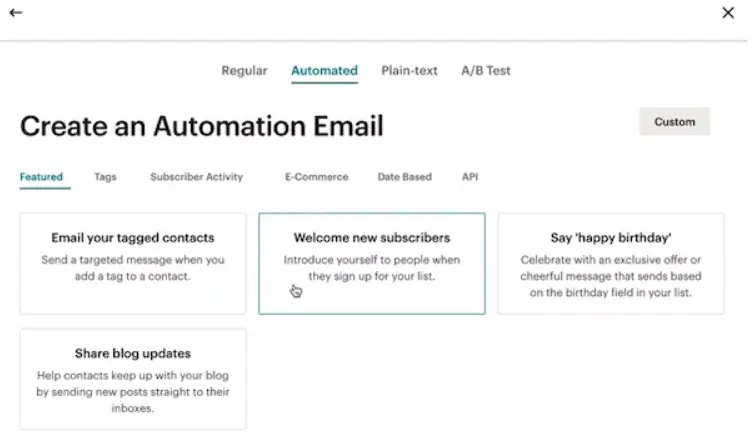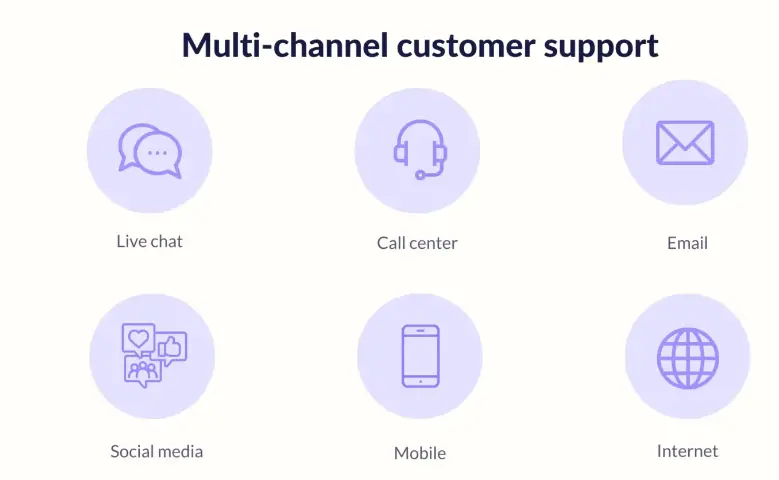Introduction
Generative AI is taking over the way businesses interact, create, and innovate. According to a McKinsey study, AI adoption has more than Adoubled in the past five years. The uses of generative AI models are broad and far-reaching.
Generative AI models are transforming how businesses approach customer service. These models learn from data and create human-like interactions. They can handle many tasks, from answering queries to creating content. One might argue that AI can understand customers better than humans. It sounds strange, but it's true. Generative AI models can analyze data and predict needs instantly. They don’t get tired or make mistakes due to stress. This makes them perfect for customer service. Businesses using AI see faster responses and higher satisfaction.
A recent report from McKinsey suggests that generative AI could contribute $2.6 trillion to $4.4 trillion in productivity gains in the economy. This points to a bright future for generative AI applications in business. In this article, you will the benefits and use cases of Generative AI models in improving customer service for your business.
Benefits of Generative AI models in Customer Service
Generative AI models offer several advantages for customer service. They help businesses provide faster, more reliable, and personalized support to their customers. Here’s how generative AI models can enhance your customer service.
Speed and Efficiency
Generative AI models can handle multiple customer queries at once, providing quick and efficient responses.
Instant Responses: Generative AI models chatbots can reply to customer questions instantly. For example, an online retailer using a chatbot can immediately answer questions about product availability or shipping times. This reduces wait times and keeps customers satisfied.
Handling Repetitive Tasks: AI can manage routine tasks like password resets or tracking orders. A telecommunications company might use an Generative AI models system to help customers reset their passwords without needing human assistance, freeing up human agents for more complex issues.
Streamlining Processes: Generative AI models can automate many customer service processes. For example, an airline can use AI to automatically send flight status updates and gate changes, keeping passengers informed in real-time.
Consistency in Responses
Generative AI models provide consistent answers to customer queries, ensuring uniform quality in service.
Standardized Information: AI ensures that all customers receive the same information. For instance, a bank using AI chatbots will provide the same accurate interest rate details to every customer, avoiding discrepancies that can occur with human agents.
Reduced Human Error: AI eliminates mistakes that human agents might make. In a tech support scenario, an AI system can give the correct troubleshooting steps every time, ensuring that customers receive reliable assistance.
Uniform Tone and Style: AI maintains a consistent tone and style in communications. A global brand might use AI to ensure that all customer interactions align with its brand voice, enhancing the overall customer experience.
24/7 Availability
Generative AI models in customer service ensures that customers can get help any time they need it, day or night.
Round-the-Clock Support: AI chatbots can provide support at any hour. For example, an e-commerce website can use AI to answer customer questions and process orders at 3 AM, offering convenience to night-time shoppers.
Handling After-Hours Inquiries: Businesses can use AI to handle inquiries outside of normal business hours. A healthcare provider might use an AI system to answer common questions about symptoms and treatments when the office is closed, ensuring patients always have access to important information.
Global Reach: AI can support customers in different time zones without any delay. An international software company can use AI to provide timely support to its global customer base, ensuring that time differences do not impact service quality.
Suggested Reading:Applications of Generative AI Models in DevOps and IT
Personalization
Generative AI models can analyze customer data to provide personalized responses and recommendations.
Tailored Recommendations: Generative AI models can suggest products or services based on a customer's past behavior.
An online streaming service might use AI to recommend movies and TV shows that match a user's viewing history, enhancing their viewing experience.
Customized Interactions: AI can personalize interactions by addressing customers by name and referencing past interactions.
For instance, an AI system at a hotel might greet returning guests with personalized messages and offers, making them feel valued.
Understanding Preferences: AI can analyze customer preferences and provide customized solutions. A fashion retailer can use AI to suggest outfits based on a customer's previous purchases and browsing history, making shopping more enjoyable and efficient.
Generative AI models are revolutionizing customer service with their ability to handle various tasks efficiently and accurately. One of the most impactful applications is the use of chatbots. This section will explore practical applications of generative AI in customer service, focusing on the functions and benefits of AI chatbots, including BotPenguin as an example.
Suggested Reading:How Chatbots Powered by Generative AI are Transforming Interactions
Practical Applications of Generative AI models in Customer Service
Generative AI models in customer service offers several practical applications that enhance efficiency and customer satisfaction. Among these, chatbots stand out as a versatile and powerful tool. Let’s delve into how chatbots function and their benefits.
Chatbots for Improving Customer Services
Chatbots, powered by generative AI models, are transforming customer interactions. They provide instant, accurate, and consistent responses. Here are the key functions and benefits of AI chatbots:

Functions
Let us look at the functions of a generative AI models based chatbot for customer services:
Answering FAQs: Chatbots can handle frequently asked questions. For example, an online bookstore’s chatbot can answer common queries about shipping times, return policies, and payment methods. This reduces the workload for human agents and provides quick answers to customers.
Guiding Customers: Chatbots can guide customers through processes like account setup or product purchases. A telecom company’s chatbot might assist new customers in setting up their internet service, providing step-by-step instructions and troubleshooting tips.
Booking Appointments: Chatbots can schedule appointments. A healthcare provider’s chatbot can help patients book appointments by checking available slots and confirming bookings, making the process seamless and efficient.
Processing Orders: Chatbots can process orders directly. For instance, a restaurant’s chatbot can take orders, provide menu recommendations, and even process payments, ensuring a smooth ordering experience for customers.
Providing Support: Chatbots can offer technical support by diagnosing problems and suggesting solutions. An electronics retailer’s chatbot can help customers troubleshoot common device issues, guiding them through potential fixes and reducing the need for human intervention.
Email Response Automation
Generative AI models are revolutionizing how businesses handle email communication. They ensure timely, accurate, and efficient responses.
How AI Handles Emails
Generative AI models handle emails by :
Sorting and Prioritizing: AI can sort emails by importance and urgency. For example, a tech support center might use AI to prioritize urgent emails about system outages over routine queries. This ensures critical issues are addressed first.
Drafting Responses: AI can draft email responses based on the content of incoming emails. A retail company’s AI system can automatically generate replies to order inquiries, including tracking information and estimated delivery dates.
Personalizing Communication: AI can customize email responses by addressing customers by name and referencing past interactions. For instance, an online subscription service can use AI to send personalized renewal reminders, including specific details about the customer’s subscription history.

Personalized Recommendations
Generative AI models analyze customer data to provide personalized experiences, enhancing satisfaction and loyalty.
Analyzing Customer Data
Generative AI models provide personalized recommendations by :
Behavior Analysis: AI analyzes past customer behavior to predict future needs. An online bookstore can use AI to recommend new books based on a user’s previous purchases and browsing history, increasing the chances of additional sales.
Demographic Insights: AI can tailor recommendations based on demographic data. A streaming service can offer movie suggestions that align with the viewing habits of specific age groups or regions.
Real-Time Adjustments: AI can adjust recommendations in real time based on current interactions. For example, an e-commerce site might change product suggestions dynamically as customers browse different categories, enhancing the shopping experience.
Enhancing Engagement: Personalized recommendations can increase customer engagement and satisfaction. A music streaming service can use AI to create customized playlists, keeping users engaged and encouraging longer listening sessions.
Example: Sephora employs a generative AI chatbot on its website and mobile app that provides personalized beauty recommendations. The chatbot uses customer data, such as previous purchases and browsing history, to suggest products tailored to individual preferences, enhancing the customer shopping experience.
Proactive Issue Resolution
Predicting and resolving customer issues before they become problems.
Example: Amazon uses AI models to predict potential delivery issues. If the AI detects that a package might be delayed, it proactively notifies the customer and offers solutions like expedited shipping or refunds, thereby improving customer satisfaction.
Multi-Channel Customer Support
Providing consistent customer service across multiple channels, such as email, chat, and social media.
Example: H&M integrates generative AI models into its customer service strategy across various platforms, including social media and its website. The AI helps manage customer inquiries in real-time, ensuring that customers receive consistent support regardless of the channel they use.

Dynamic Knowledge Base Updates
Continuously updating and expanding a company's knowledge base by generating new articles and guides based on customer inquiries.
Example: Salesforce integrates generative AI models into its Service Cloud to automatically update FAQs and support articles.
As new customer queries emerge, the AI generates relevant content to keep the knowledge base current, helping customers find accurate answers more quickly and reducing the load on support teams.
BotPenguin's Generative AI-Powered Chatbot for transforming your customer services
BotPenguin is a user-friendly AI chatbot platform that integrates with numerous tools, enhancing business operations across various industries. It supports payment gateways, CRM systems, e-commerce platforms, and more, ensuring smooth transactions, efficient customer relationship management, and a seamless shopping experience.
The platform’s continuous learning and feedback mechanism make it a valuable asset, helping businesses improve customer satisfaction and employee efficiency by automating routine tasks. BotPenguin’s non-coding interface, wide industry coverage, and personalized templates make it an accessible and effective solution for businesses looking to enhance their customer service through AI.
Features of BotPenguin's AI Chatbot
Let's look at the amazing features offered by BotPenguin AI Chatbot:
Multiple Messaging Channels: Connects with customers via text, email, social media, and video chats.
Natural Language Processing: Understands and responds to customer messages, even with grammatical errors.
Appointment Booking: Allows customers to schedule appointments through the chat window, synced with calendar apps.
Lead Generation: Captures customer details like name, email, and phone number effortlessly through chat.
Cost-effective: Offers a free plan and is a budget-friendly solution for businesses.
Drag-and-Drop Builder: Easy-to-use tool for designing complex chat flows without coding.
Customizable: Tailor the bot’s persona, tone, and behavior to match your brand.
Deep Analytics: Captures and computes user conversation data for valuable insights.
Conversational UI: Provides polite, relevant, and accurate responses, enhancing customer engagement.
Contextual Chatting: Adapts to customer behavior and responds according to the conversation’s context.
Trainable AI: Improves over time by learning from interactions and custom datasets.
40+ Chatbot Templates: Quick deployment with industry-specific templates for common use cases.
Conclusion
Generative AI models are transforming customer service, offering faster response times, consistent information, 24/7 availability, and personalized interactions. Businesses integrating these technologies see improved efficiency and customer satisfaction.
The future of customer service lies in leveraging Generative AI models to handle routine tasks, allowing staff and stakeholders to deal with more pressing matters.
As Generative AI models continue to evolve, their capabilities will only expand, making early adoption crucial for staying competitive.
For businesses ready to embrace this change, BotPenguin offers an AI chatbot solution that’s easy to set up and incredibly effective. Imagine providing instant support without the wait, reducing operational costs, and keeping customers happy around the clock. Don’t miss out on the AI revolution. Join the AI wave now and ensure your business stays ahead.
To realize the full potential of generative AI models while maintaining the quality and integrity of your business processes, it’s important to balance the benefits with ethical considerations, data security, and maintaining human oversight.
Frequently Asked Questions (FAQs)
How can generative AI models improve customer service response times?
Generative AI provides instant responses to customer inquiries, significantly reducing wait times. It can handle multiple queries simultaneously, ensuring customers receive timely and efficient support around the clock.
What types of customer interactions can AI chatbots handle?
AI chatbots can manage FAQs, guide customers through processes, book appointments, and provide technical support. They ensure consistent and accurate responses, enhancing the overall customer experience.
How does generative AI models ensure consistency in customer service?
Generative AI models provide uniform responses based on trained data, eliminating human error. This consistency ensures customers receive accurate and reliable information, enhancing trust and satisfaction.
Can generative AI models personalize customer interactions?
Yes, generative AI analyzes customer data to offer personalized recommendations and responses. This enhances customer engagement and satisfaction by tailoring interactions to individual preferences and behaviors.
What are the benefits of using AI for email response automation?
AI automates email sorting, prioritizing, and drafting responses, saving time and reducing human error. This ensures timely and consistent communication, improving overall customer service efficiency.
What are some challenges of implementing generative AI models in customer service?
Challenges include ensuring data privacy, maintaining high-quality training data, and building customer trust. Addressing these issues is crucial for the successful integration of AI in customer service operations.
